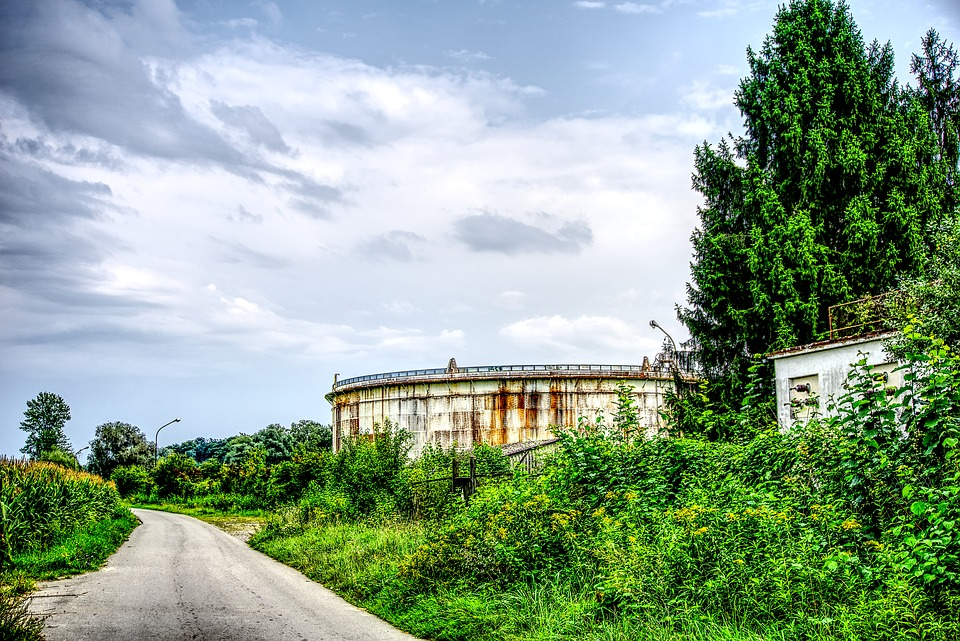Are you using a steel tank for the storage of oil required to heat the home? If yes, this tank, whether it is underground or above the ground, must remain in good condition to properly serve its purpose. All steel tanks meant for oil storage are designed to last their useful life, which is 20-25 years. With good maintenance, you can extend the lifespan of your tank by a few years. But all tanks start to corrode as they come in contact with moisture.
If your storage tank is new, you need not worry about its life. But if the tank is quite old and installed by the person you purchased the home, you need to know the year of its manufacture and installation. You can prevent costly clean-up and removal of the oil tank if the tank has not failed yet. If corrosion has taken place and it is spilling oil from these holes, you may be required to shell out a huge amount of money for its removal and replacement.
You must have seen how steel tanks are kept several inches above the concrete to keep it away from possible corrosion. But there is no such luxury available to you if the storage tank is placed underground near the foundation stone. The tank remains in immediate contact with soil and all the moisture that ultimately succeeds in corroding the thick layer of steel. Even those steel tanks kept overground do not escape corrosion. If you were to see the inside of these tanks, you will find that the inner surface of the steel tank has become corroded. Tank failing is a big problem for the homeowner as he can face legal action from the authorities for contamination of soil and groundwater.
Factors Affecting the Lifespan of a Fuel Tank
As mentioned above, there is a definite useful life of a steel tank. It can be 15 years or 20 years, depending upon the material used for its manufacture. Some tanks may last a little longer, and some may last a little bit shorter. According to the experts at www.simpletankservices.com, the tank life is longer when the steel tank is kept above ground as it can be inspected and the problem rectified easily. Once it is placed underground, there is no way it can be inspected unless there is a way of digging the earth out.
Underground storage tanks (USTs) fail after corroding and spill oil continuously without the homeowner noticing it. However, even underground, tanks made of thicker steel walls last longer than tanks with thin steel walls. If your fuel tank is aboveground and there is thick vegetation surrounding it, you need to be careful during autumn as wet leaves can lead to rusting of the steel wall.
Periodic Maintenance is The Key to Extend the Lifespan of a Steel Tank
Most homeowners have no idea whether their oil tank lying underground has already failed or about to fail shortly. It is a direct result of the storage tank lying underground and away from their sight. You must keep in mind that the life of any steel tank is almost the same as that of the roof of the house. If you think of replacing the roof after 20 years, the same is the story with a fuel tank, whether it is placed over ground or underground. Underground storage tanks are more prone to failure as their inspection and maintenance are not as frequent as that of aboveground storage tanks.
If you are planning to buy a house built before 1975, you can very well forget that the underground storage tank on the property can be in working condition. There is no need to assume that a steel tank can last forever as it is just not possible.
It is also not wise to assume that just because the house is old, the steel tank placed underground on the property must have been replaced by the owner. In all probability, very few homeowners across the country took pains to get their failed tanks removed and replaced by new steel tanks. It is not advisable to start using the old steel tank in the house that you have purchased now. It is better to get it cleaned and inspected first. If it is found to have failed, the only option in front of you is to go for its removal.
Removing Moisture Extends the Life of the Tank
If you know physics, you will have little problem understanding that there is condensation and sweating taking place inside the tanks whenever the hot oil inside them is heated. This small amount of moisture sits at the bottom of the tank as water is lighter than oil. Over time, the level of moisture starts to build. If this moisture finds its way into the pipes and the boiler, you may have to pay for the repairs of the heating system. This moisture is present in ASTs just as it is found in USTs. It means that your steel tank is vulnerable to rotting even when it is placed above ground. Make sure that it is cleaned properly during regular servicing to get rid of all this moisture.
Today, it is very easy to detect the presence of moisture inside the steel tank with the help of a paste that finds water without much ado. Once the presence of water at the bottom of the surface of the steel tank is confirmed, you should contact a contractor who can get rid of this moisture.

Painting the Body to Prevent Rusting
Another important way to extend the lifespan of your steel tank is to paint it every few years. Repainting is necessary whenever you see the original shine of the tank gone because of exposure to the elements.
If you take good care of the steel tank by inspecting and getting it serviced periodically, it will serve you optimally for a long time to come. Of course, you can service the above-ground tank more easily than an underground storage tank. If the tank is not visible, it doesn’t mean it is not rotting against the soil underground.










